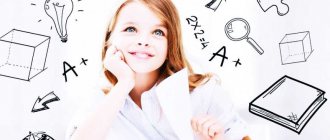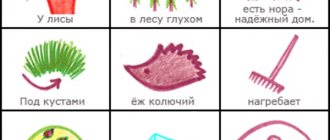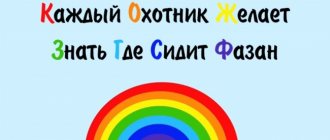Memory is a complex of cognitive abilities and higher mental functions for the accumulation, preservation of information and reproduction of acquired knowledge and skills. In other words, memory provides us with the memorization and subsequent use of accumulated information. Memory is necessary for the normal and full existence of a person. The ability to remember provides the child with the opportunity to accumulate experience, and this, in turn, is a necessary condition for the formation of perception, thinking and speech. Therefore, the development of memory in preschoolers becomes an important task for teachers and parents.
How does a child's memory work?
A preschool child is active in learning about the world around him, looking for answers to his questions, trying to get as much information as possible about what interests him. New knowledge is remembered and stored, and when the need arises, it is reproduced. This form of reflection of experience is called memory.
The development of memory in preschool children is inextricably linked with the formation of other cognitive processes. Thus, recognition of objects and phenomena in perception is possible only if they have already been perceived in the past, and information about them is imprinted in memory. On the other hand, the process of memorization is the establishment of connections between what is observed and perceived directly at this moment and what was in the child’s experience earlier.
Objects and phenomena can be reflected in memory, both those to which attention is directed, and those that come into the child’s field of vision by chance, but evoke an emotional response in him. That is why the quality of memorization of various types of information is influenced by the child’s personal characteristics: his interests, mood, preferred types of activities.
The strength of memorization is influenced by the degree of comprehension of the material. Meaningful memorization consists in the fact that a person tries to correlate new information with that which was in his experience earlier, due to which knowledge is systematized.
When learning by rote, a person does not understand the meaning of the material.
Age characteristics, memorization statistics
Throughout adulthood, changes occur within the human brain that affect memory functioning. The main period when the most significant changes occur is preschool age. But no less important are the changes that occur at earlier stages of the baby’s development. You can also better understand how memory works with the help of simple statistics regarding the quality of memorization of information among preschoolers of different ages under special conditions.
Age characteristics
A child's memory develops gradually. At first, only certain types of it are used in limited quantities, but over time, the ability to memorize begins to grow. Changes occur already from the first year of life, and their peak becomes the age of 6-7 years, when the preschooler is ready to be sent to first grade.
How memory changes before reaching school age:
- Up to 1 year - motor memory slowly begins to develop, in terms of conditioned reflexes, the baby remembers all his movements, and sometimes learns an emotional response. Memorization becomes the basis for perceiving the world around us.
- From 1 to 2 years – the baby remembers the faces of all loved ones, his memory becomes stronger, because The nervous system begins to develop, and figurative memories are deposited in the head.
- From 2 to 4 years - during this period the baby begins to memorize complex words, with effort he can reproduce them independently, after a while he develops logical thinking.
- From 4 to 6 years - in older preschoolers, the quality of involuntary memory begins to sharply increase, they easily remember everything they pay attention to, while thought processes begin to actively develop in their heads.
With the gradual strengthening of memory, children develop the quality of thinking, which is why they become smarter and more capable in terms of learning. After the transition from the category of preschoolers to the group of first-graders, the brain does not stop developing and begins to work even more actively.
Memorization statistics
To test the quality of involuntary memorization of various information, scientists conducted many tests in which dozens of preschoolers took part. Based on them, it was possible to draw conclusions confirming the effectiveness of training related to games.
The main test concerning involuntary memorization of words was carried out in two versions: educational conditions (U) and game form (I). The results include the average number of words children remember and are as follows:
- Children 4 years old – 0.6 words (U) and 1.0 words (I);
- Children 5 years old – 1.5 words (U) and 3.0 words (I);
- Children 6 years old – 2.0 words (U) and 3.3 words (I);
- Children 7 years old - 2.3 words (U) and 3.8 words (I).
The peculiarities of memory development in preschool age are such that something is best remembered in a playful form. Moreover, every year the child begins to assimilate the material received better and better. This applies not only to memorizing words, but also to storing absolutely any information in memory.
What types of memory are there?
The information that is reflected in memory may be different. This difference lies in the involvement of different senses (analyzers) when perceiving it. There is no single and indivisible memory. In reality, human memory consists of three main components. These are the so-called types of human memory. Each of them is important at a certain stage of memorization. Only the coordinated and harmonious work of all “parts of memory” allows each of us to acquire new knowledge, assimilate a variety of information and remember past events.
The following types of memory are distinguished:
- visual (memorizing images and phenomena seen);
- auditory (remembering heard information);
- olfactory (memory for smells);
- tactile (reflection of tactile sensations in memory);
- gustatory (memorizing taste sensations).
If we take into account the nature of the child’s mental activity associated with the process of memorization, then memory can be:
- Motor - aimed at remembering movements and their sequences. Plays an important role in the formation of walking, running, writing, labor and other motor skills.
- Figurative - represents a reflection in memory of objects and phenomena that were perceived through the senses (visual, auditory images). It is figurative memory that is predominant in preschoolers.
- Emotional - responsible for remembering experiences. Thanks to this, having recalled some life events, a person can again feel the emotions associated with it (joy, shame, fear). This type of memory serves as a support for the moral education of preschool children.
- Verbal-logical - in this case, the object of memorization is thoughts and concepts. In this case, information can be reproduced both verbatim and in a verbal form that is more accessible to humans for understanding.
Depending on how long information will be stored, memory can be short-term, long-term and operational. Short-term memory allows you to store and reproduce information immediately after it is perceived.
Thanks to RAM, it is possible to retain certain knowledge for the time necessary to carry out any activity. If this knowledge, after a person achieves a goal, loses its significance, then it is forgotten.
Long-term memory is responsible for storing information for a long time. Thanks to this, the strength of memorization of the knowledge and skills acquired by a person is ensured.
According to the degree of human activity in the process of memorization and reproduction, voluntary and involuntary memory are distinguished. Involuntary memorization occurs when a person, in the process of some activity, without much effort, learns useful and interesting information. Voluntary memorization presupposes the presence of a goal to assimilate this or that material and is impossible without the volitional efforts of a person.
Depending on the orientation of the child’s personality, memory is characterized by individual characteristics: memory volume, accuracy of reproduction, speed of forgetting. The individuality of children's memory is manifested in the fact that, observing the same phenomenon, different children will remember an unequal number of details, and not everyone will be able to tell well about what they saw over time.
Simple workouts
Achieving memory development in preschoolers is not as difficult as it might seem at first glance. You just need to provide the child with comfortable conditions, as well as put into practice the techniques you like, but do this in such a way that the child does not experience negative emotions during the training process. To fulfill the last condition, it is necessary to take into account the interests of children, giving them the right to vote in the choice of technology for development. It’s best to start with methods that are simpler and more accessible in everyday life.
Poems
At school, many children begin to dislike poems, because... It is extremely difficult for them to cope with memorizing long poetic works. If you learn interesting rhymes before school, then this outcome can be prevented. At the same time, memorizing even light quatrains will be beneficial, making the child’s memory much stronger.
It is important that the child himself likes the poem. At the same time, parents should in every possible way encourage his desire to learn a few more lines. It’s enough to simply praise the baby, saying how great he is. It is best to approach learning poems at the age of 5-6 years.
Memorizing information
Simple memorization is a popular method for schoolchildren to memorize important information. But it can be extremely effective for preschoolers too. This is due to the fact that with active memorization, the child’s memory is seriously trained, becoming stronger. For these purposes, you can select short, simple rules or interesting facts. The child will have to reproduce the memorized text as accurately as possible.
It is not recommended to get carried away with this method, because... it may have a negative impact on future learning. If a child gets used to memorization, then involuntary memory will work less effectively, and the desire to understand and understand the subject will be blocked by attempts at simple memorization.
Reading
Literature can also be very useful in developing memory. If the child has already learned to read, then he can be given simple books that he can master. Preschoolers who cannot yet read even a short story on their own should be helped by their parents. You just need to read any interesting book to your baby before bed or during the day.
After reading, parents should discuss the story they read with their child. You can ask for comments on certain events, tell your impressions, or offer to find references to certain things on the pages of the work. It is also advisable to give the child the task of briefly retelling the story he heard.
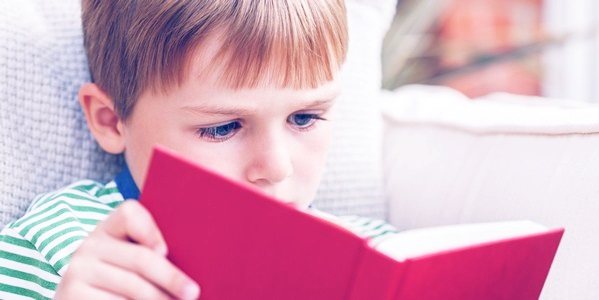
What I saw
A very simple method to strengthen your memory. It represents an interesting interaction between parents and child. The idea is that adults ask the child questions or ask him to talk about any recent event. For example, going to the circus or an evening walk. You need to choose activities that evoke a lot of emotions in your child.
With such discussions, the child will develop memory, sociability, outlook, as well as a desire to show increased attention to detail. It is important to ask questions with motivation, so that the child understands why he is being asked about this, and the conversation does not resemble an interrogation.
Associations
One of the most effective mnemonic techniques is association. They are very often used by children to memorize information, but when used purposefully, this method leads to memory strengthening. Its essence is to create associative chains in which each item is connected to each other by a certain characteristic. This memorization allows you to retain the maximum amount of information in your memory.
It is recommended to use the technique for preschoolers 6-7 years old. Younger children will not be able to fully use all the conditions of associative chains.
Scientists have proven that 70% of information received is forgotten the very next day, another 25% is forgotten within a month. It turns out that of the memories that are not further consolidated, only 5% remains in the head.
Features of memory development in preschool children
The development of memory in preschoolers is characterized by high intensity, changes in its qualitative (level of awareness, focus) and quantitative (volume of material, duration of storage) characteristics.
The main characteristic of the memory of preschool children is the predominance of involuntary forms of memorization. It is easy to remember what is bright, new and interesting for a child, what causes an emotional reaction in him.
Preschool children are actively developing speech, accumulating vocabulary, all this helps to improve the memorization of verbal material. Preschoolers easily remember dialogues from cartoons, songs and poems. Children are already able to notice if an adult makes a mistake when telling their favorite fairy tale.
The need to remember material in children of middle preschool age may arise during games, when performing household errands, or during classes in kindergarten. Faced with the need to remember something, the child begins to look for ways to remember. Thus, some preschoolers, when memorizing presented material, try to connect it with past experiences (associative method of memorization). For example, by remembering images in pictures (a ball, a jump rope, a bow), a girl can combine them by recalling events from her life: “I have a jump rope, but I prefer to play with a ball. And yesterday my mother tied a red bow for me.”
Preschool children often demonstrate the ability to accurately imprint whole situations in memory, and then reproduce these memories in detail. Such memory is called eidetic (figurative). It is based on the visual perception of subjective images. This type of memory gives a very high memorization effect in the child’s learning process.
Additional recommendations
If you have decided to develop the memory of a preschooler, then you should not limit yourself to direct methods. There are a number of conventions that have a significant impact on brain function, which can significantly harm the effectiveness of training. Therefore, it is very important to pay attention to them, as well as bring all the necessary changes into the child’s life.
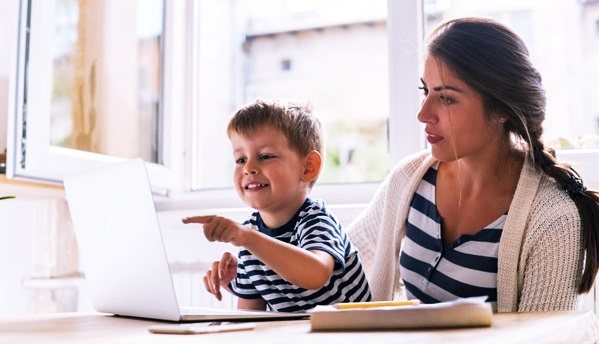
Daily regime
Establishing the correct daily routine is an important condition, without which it will not be possible to develop memory. A child needs to sleep at least 8 hours every night, and he must have enough free time during the day or evening to devote to his favorite entertainment.
It is important to plan the day for your child in such a way that he does not experience overwork. Even if you need to perform a difficult task for a very long time, you must take short rest breaks. You should also make sure that the baby does not suffer from idleness and is not lazy.
Emotions
The emotional component is of greatest importance in the life of a preschooler. It is on her that the future of the baby, the characteristics of his development and the perception of the world around him depend. Parents should devote as much time to him as needed. Lack of communication is detrimental to a child’s psyche.
You need to spend a lot of time with a preschooler, give advice, show care, and help if necessary. He must feel parental love. Only in this way will he have the desire to develop, be a good person and communicate with the people around him.
Nutrition
Almost every parent prohibits their child from eating junk food. For this reason, children make scandals, cry, get very offended, and the most desperate ones simply run away from adults, without thinking about the consequences. Therefore, you need to prepare the child by explaining why certain foods cannot be eaten.
Fatty or fried foods, fast food, carbonated drinks should be excluded from the diet, and the amount of sweets consumed with baked goods should be limited. The most beneficial will be: nuts, grains, fruits, vegetables, herbs, mushrooms, cheese, white meat, seafood, fish and liver.
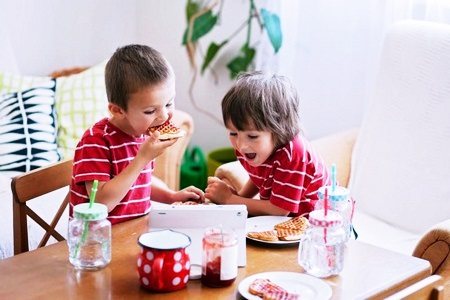
Physical activity
Movement is life. It even affects the level of intellectual development and the quality of memorization. This is due to the fact that physical activity increases blood circulation, which increases the efficiency of the brain. At the same time, metabolism is normalized, the likelihood of the occurrence of certain diseases is reduced, and mental stress disappears.
For preschool children, light jogging in the park, dancing, yoga, and swimming are suitable. It is acceptable to engage in other sports, but when choosing, be sure to take into account the child’s personal wishes.
It is recommended to spend more time outdoors. This is especially useful for children's bodies. With daily walks, memory development during preschool age will become even more effective.
How to develop a preschooler's memory
A child of preschool age is active in exploring objects and phenomena of the surrounding world; the task of an adult is to direct his perception, to ensure that he receives a variety of information about the subject that interests him. For example, in order to remember the characteristics of an apple, a child must determine its shape, color (use vision), touch it (get tactile sensations), taste it (use taste buds), while an adult will supplement this information with a story about how apples are grown.
The child’s participation in receiving information ensures the strength of its memorization. The material that is intended for memorization must be significant in the child’s activities.
An important role in a preschooler’s memorization is played by his interest in the observed object. Therefore, in the education of preschoolers, creating motivation for activity plays a special role. To do this, when offering a task to a child, you need to try to create an imaginary game situation, evoke a desire to make a discovery, and gain satisfaction from success. For example, a game where the child needs to help guide forest friends across the road will help you remember the colors of traffic lights. Such activity is associated with the child’s emotional inclusion in a situation that requires him to memorize the material.
If an adult sets a child the task of remembering material, then it needs to be done in such a way that it is clear to him why it is needed. Conscious memorization and reproduction of information is already the beginning of the development of arbitrariness of memory. Such purposeful assimilation of material occurs in the process of educational games.
The development of a preschooler's memory is facilitated by adherence to a daily routine. This involves performing certain actions at the same time every day. Such frequent repetition ensures the strength of involuntary memorization.
Thus, the development of memory in preschoolers requires:
- constantly involving the child in activities that involve memorizing and reproducing material;
- creating conditions for the child’s activity and independence in cognitive activity;
- establishing a connection between what is being studied and the needs and interests of the child;
- inclusion of new information about objects and phenomena intended for memorization into the system of existing knowledge.
Definition, processes
Memory refers to the ability to remember any information, as well as a general set of personal memories of all events that happened in life. It is based on three processes:
- Memorization. The first component is the process of generating information in the form of nerve impulses inside brain cells. At the same time, ways of receiving and extracting information appear, using the neuro-reflex connections formed by this process. New information is added to existing information, as a result of which a person develops associations between various phenomena and knowledge.
- Preservation. The second element is associated with the formation of an engram within the brain. It is a clear memorable trace that remains with a person for life. Extracting information from an engram can be difficult, but with the development of memory, the task becomes much easier.
- Playback. The third process is the use of information that was previously stored in memory. It allows you to quickly recall important data and conventions, which can make it easier not only to remember new information, but also to reproduce it.
Consolidation of information in memory always goes through all three stages, after which new data either quickly disappears or is stored for a long time. It depends on what type of memory was used in memorization.
The role of literature in the formation of memory of preschool children
One of the most effective methods of achieving the desired result in developing memory in preschool children is reading fairy tales and other children's literature, as well as listening to children's audio books. Reading fairy tales and stories is very important for the development of memory in preschool children. When choosing fiction for a child, you need to make sure that it is accessible to his understanding, has a connection with his life, and contains pictures that correspond to the meaning of the text. Preschoolers enjoy listening to stories about children and commenting on illustrations, because it is close to their experience. Thus, based on listening, the opportunity to examine the image, to emotionally experience the events described, a holistic image is created in the child’s mind, which is easily remembered.
If the content of a fairy tale or story is interesting to the child, you can invite him to answer questions or retell the text based on the illustrations. Reproducing new information for an adult is also a way to develop a child’s memorization skills. Repeated repetition ensures the strength of storing the material in memory.
What is memory
All events, experiences, feelings and emotions that every person feels during his life are necessarily reflected in his personality.
Memory is our amazing and mysterious property. This is remembering, preserving and reproducing past experiences. Why do we remember snippets of songs from distant childhood, but sometimes we forget what we went to the next room for? Why does our brain store telephone numbers or dates that are no longer relevant? One remembers faces better, the other remembers names. What does this depend on?
It's all about what kind of memory we use.

The role of play in the development of memory in preschool children
Play is the leading activity for children aged 4-6 years, so the development of memory in children of this age group involves the use of gaming techniques that increase the motivation to remember. For example, by playing the role of a buyer in a game, a child can remember the list of products that he should purchase. But memorizing the same list outside the game will not be so productive and will require a significant number of repetitions.
The development of memorization is facilitated by finger games, which involve establishing a connection between a word and an action and ensure the child’s activity in mastering new knowledge - the baby, listening to the adult, repeats the movements after him. After several repetitions, the child will try to independently reproduce not only the movements, but the words.
Minerals, vitamins and amino acids that help improve memory
- Vitamin C is the real king among vitamins, which is capable of increasing the mental activity of the brain, along with its other great abilities to work wonders in our body. Every child probably knows where vitamin C is found. And of course these are bell peppers, cabbage (especially sauerkraut), spinach, broccoli, many berries (currants, raspberries), rose hips, and of course citrus fruits.
- Choline, or vitamin B4, is used by the body to produce the neurotransmitter acetylcholine, which is essential for the normal functioning of all cells. Choline is especially important for brain function, as it affects areas of the brain responsible for memory functions and learning throughout life. Choline is also essential for transporting nutrients throughout the body, including the brain. Eggs are a rich source of choline and other sources include beef, cauliflower, wheat, peanuts and lettuce. Similar to taurine, choline is usually fortified in milk powder. Products containing choline - meat, milk, soy, egg yolk, cauliflower. These foods also contain other B vitamins, which also have a beneficial effect on brain function.
- Taurine is an amino acid that supports neurological development and increases memory power in children. Taurine is also believed to have antioxidant properties that help brain function. Taurine is found in meat, fish and breast milk. Most commercially produced dry formulas are fortified with taurine, since the body of young children deprived of breast milk does not have the ability to synthesize taurine from their diet. Regular cow's milk does not provide enough taurine.
- Folic acid reduces homocysteine levels, elevated levels of which have a bad effect on memory. Foods rich in folic acid include whole grains, soy, spinach, green peas, broccoli and oranges. There is ample research evidence to support the use of folic acid as a memory booster.
- Vitamin K (phylloquinone) strengthens the walls of blood vessels, protects them from destruction and gives them elasticity, prevents the development of atherosclerosis of all vessels, including brain vessels. It is known that this substance improves memory and activates mental activity. This vitamin is found in foods of plant origin - spinach, white cabbage, green tea and black tea, tomatoes, broccoli, dates, watercress, legumes and many others. etc. Among animal products, vitamin K contains beef liver, cod liver, eggs, and goat milk.
- Omega 3. The benefits of this polyunsaturated fatty acid are that it promotes brain development. Food sources of omega-3 fatty acids include fish oil and some vegetable or nut oils. Tuna, salmon and herring are also animal sources of Omega 3s. Peanuts, walnuts and almonds are also common sources of this fatty acid. For children who do not like to eat fish or nuts, fish oil is available in capsules or in the form of gelatin figures with different flavors.
- Magnesium is necessary for our body and brain, as it is an anti-stress substance, participates in the metabolism of fats, carbohydrates, proteins, transmission of nerve impulses, cleanses the body of toxins, and so on. This trace element improves memory and attention. Magnesium is found in almost all nuts, cereals, sprouted cereal grains, mustard, bananas, seaweed and legumes. Among vegetables, magnesium is found in sufficient quantities in broccoli, beets, avacados, onions and greens. Cocoa fruits and, accordingly, dark chocolate are also rich in magnesium.
- Selenium is a powerful antioxidant necessary for strengthening memory, as it protects nerve cells from their destruction. Selenium is found in herring, crab, garlic, oregano, olive oil, shrimp, porcini mushrooms, wheat germ and Brazil nuts.
Parents should also know that if a child has serious memory problems and it is very difficult for him to remember, it may be worth contacting a neuropsychologist.
Games and exercises for developing memory in preschoolers
Game: “Explain without words.” Goal: development of motor memory. A game for a group of children from 4 years old.
One child stands next to the adult, the rest turn their backs to them. The adult shows the child a series of movements that contain certain information. For example, he walks (I went into the bathroom), imitates washing his hands and washing his face (I washed my hands and washed my face). The child immediately repeats after the adult. And when the other children turn to face them, he reproduces the entire series of sequential movements for them. Participants must guess what the child was trying to tell them. The complexity of the selected movements and their number depend on the age of the children.
Game "What's missing?" Goal: development of figurative memory.
To play, you will need 3 to 7 small objects (depending on the age of the children), for example, small animal figurines.
It is better to play the game individually or in a group of no more than three children. The figures are lined up, each is named and discussed. Next, the child is asked to close his eyes, and the adult quietly removes one figure. In the case of animals, a game task for a child might look like this: “Look, who’s missing? Who went for a walk?" And the task arises of remembering all the figures that were presented and determining which one is missing.
Exercise “What did it sound like?” Goal: development of auditory memory.
The exercise uses musical toys, for example, a bell, a rattle, a tambourine, a drum.
Toys are shown to the child. He can explore them, listen to how they sound. The adult suggests the name of each item. After this, the child turns away, the adult rings the bell, for example. Game task for a child: name which toy makes such a sound.
Exercise “Remember and name.” Goal: development of short-term memory.
To carry out the exercise, you need to find a plot picture, for example, which depicts children playing.
The child studies the picture together with the adult, names what objects are depicted, and describes them. After this, the picture is hidden, and the child is given the task: “Remember what you saw in the picture?” If difficulties arise, you can prompt the child by asking questions.
Game "What's in the bag?" Goal: development of indirect memorization.
To play you need a bag and 3 to 8 small objects, for example, a ball, a bell, a pencil, an apple.
Looking at each object, the child comes up with what it looks like, for example, a ball - like the sun, a pencil - like a stick. After this, all the items are collected in a bag, and the adult gives the task: “Remember what I have in my bag according to my clue words.” And so the child, according to the definition word, must remember all the objects: the sun - a ball, a stick - a pencil, and so on all the others.
Voluntary and involuntary memorization
At the age of four or five years, children remember information unconsciously. The most interesting or accidentally attracted attention phenomena, objects, names settle in their brains. Preschoolers do not know how to set memorization goals and implement them; they do not know the techniques by which the process of perception can be simplified.
The task of parents, educators, and teachers is to prepare the ground for the transition from involuntary to conscious perception by the beginning of school. To do this you need:
- develop speech, name surrounding objects. During the experiment, which consisted of showing a group of children cards with images of objects, the following was revealed. Children remembered objects whose names were spoken out better. Of the 10–12 proposed pictures, they reproduced from memory 8 with the spoken names and only 2–3 without them;
- Read aloud to children, look at and discuss pictures together. At this age, children tend to imitate fairy-tale characters, so classes additionally have an educational effect.
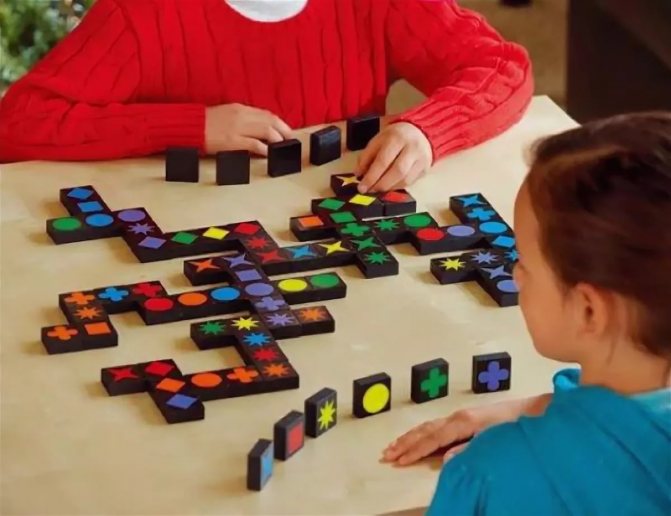
Developed voluntary perception is an important indicator of readiness to start school. There are children who do not want and do not like to study from the first grade. They spend all their energy not on the educational process, but on overcoming their own laziness. This phenomenon is directly related to the development of memory. Guys who have trouble remembering information are unsure of themselves and shy.
There are special classes in which voluntary perception is trained and memory is developed. The exercises include mastering mnemonic techniques and memorization techniques.
Somewhat later, children with developed voluntary perception are ready for more complex Memorica activities. This is an original technique aimed at increasing memory capacity, developing attention and concentration. After this course, the child will be able to manage all the processes of his memory and will be able to systematize any information received. After completing the course, students' memory capacity increases, self-doubt and fear of exams and tests disappear.
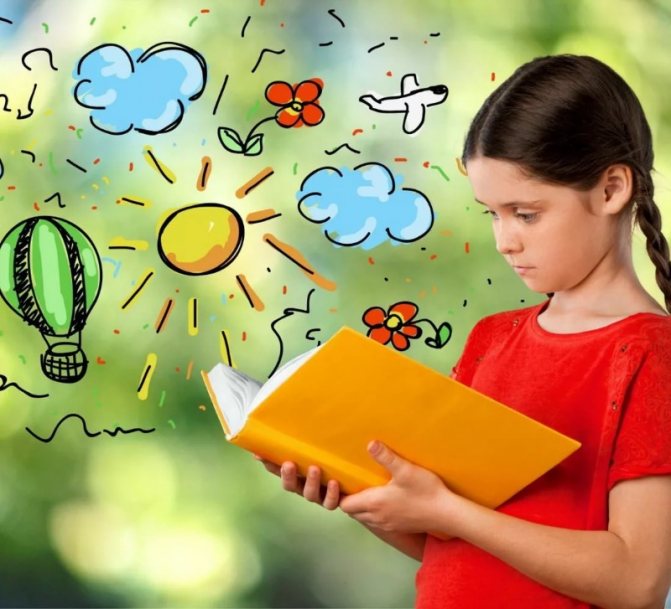
Exercises to develop memory and attention
- "Detective". Development of voluntary attention. The child looks at 15 pictures for 15 minutes, after which the pictures are removed; The child must name the pictures that he remembers.
- "Pyramid". Development of short-term mechanical memory. The adult tells the child one word, the child repeats; then says two words, the child repeats, then three words, the child repeats, etc.
- "Pathfinder". The adult shows the child a toy and says that he will hide it in the room now; the child turns away; the adult hides the toy, and the child must find it.
- "Cloth". The child must remember in what order he put on the items of clothing in the morning.
- “What did you have for lunch?” The child remembers what he ate for lunch.
- Draw the same one. An adult draws a simple object on a piece of paper, the sheet is turned over, and the child must draw the same object.
- “I put it in a bag.” An adult puts various objects into a bag in front of the child; The child must remember what is in the bag.
- "Short story". An adult reads a short story, the child must repeat it.
- "Tower". The child is shown a schematic representation of a tower consisting of many geometric shapes. The child must remember these figures and name them.
- "Stick Figure" An adult lays out a figurine from sticks (pebbles, twigs, beads); the child remembers it and puts out the same one from memory.
Mnemonics is an effective method for developing memory in preschool children
Many of you watched the show with the host Yakubovich - “I Can”. Do you remember how people with phenomenal visual memory surprised and delighted you? One of the participants said that he started training his memory quite recently and shared that he used one technique for training, namely, mnemonics. Mnemonics (“the art of memorization”) is a technique for developing memory, which is based on the creation of images and associations. In other words, to learn to remember, you need to imagine various objects in your imagination. The child has excellent associative memory and a rich imagination, so mnemonics are very effective for the development of memory in childhood. The main principle of this method is to create the most complex associative chain. The more unusual the situation you create in your mind, the more strongly it sticks in your memory.
Some kindergartens practice mnemonics to develop memory in preschool children, but there are not many of them, and most likely you will have to master this technique yourself with your child. There is literature describing this technique on the Internet, as well as on bookstore shelves. One of the most interesting and useful books on mnemonics was written by R. Geisselhart and it is called “Memory. Memory training and concentration techniques." This book describes this technique and exercises in detail and popularly. Once you have mastered it, you will be able to practice with your child on your own, and you will also learn to train your memory.



